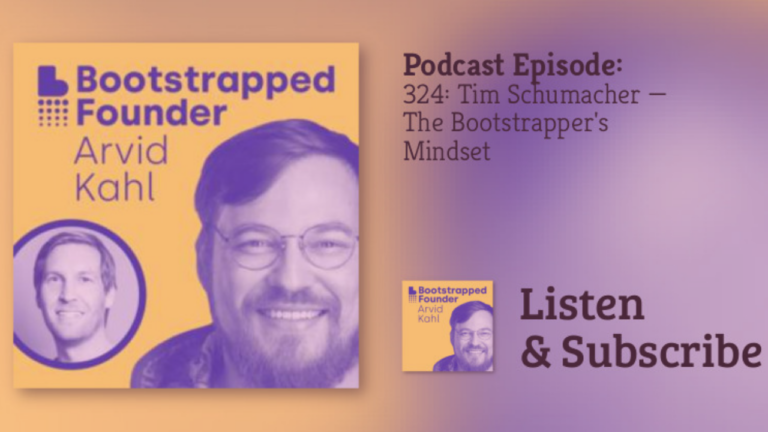Founders, especially first-time founders who’ve managed to get some revenue under their belt pretty early on, don’t want to do the boring job of keeping track of the metrics. People are buying, what else is there to care about? “Unsexy” stuff, however, is what could keep your business afloat.
After talking to dozens of bootstrapped founders, the only metric everyone agrees on is MRR. Not even ARR, as it’s a bit too far down the road, especially if it’s your second-third year in business. And in this case, your month-to-month can vary significantly since there are usually a lot of experiments to figure out what works and what doesn’t.
However, MRR is not the only thing to care about if you’re going for a long-term commitment with your venture.
We’ve compiled a few more metrics to give you an idea of a starting point in your tracking journey.
Metrics that matter:
Customer Acquisition Cost (CAC)
Customer acquisition cost is self-explanatory. It’s the amount of money you have to spend to bring new customers into the business.
Customer Acquisition Cost = Cost of Sales and Marketing / the Number of New Customers Acquired
Even though you don’t directly pay customers to use your product, in a way, you still do. If you’re a niche bootstrapped SaaS, and your tickets are between $10 and $1000, you definitely want your CAC as low as possible. However, if you’re going after enterprise clients and your tickets are high, CAC can be significantly higher, as well.
This can be, of course, adjusted through experiments that you conduct to find the most cost-efficient and effective acquisition channel.
At the early stages of founding a business, every sign-up matters. And when you’re assessing your customer acquisition cost, everything that goes into it should be calculated, including the less obvious ones like team members’ salaries and the cost of marketing tools you’re using.
Lifetime Value
Lifetime value is the amount of money every customer brings to you during the time they use or engage in any other way with your product or service. Knowing your customer acquisition cost (CAC) in this case obviously helps calculate the CLTV more accurately, while also getting a clearer understanding of what acquisition channels work best. It’s a great metric to measure if a business is growing or stagnating on the brink of death.
CLTV = Average revenue from a customer per year x Average lifespan of a customer
Lifetime value is something you calculate a little further down the road. At this point, your customers have spent some time engaging with your product, and it’s wise to splurge a little on retention and customer happiness, too.
The day you make a sale is just the beginning of your relationship with the customer, make sure your honeymoon phase is good but marriage is even better, and you live happily ever after.
Retention Rate + Churn Rate
Just like that. These two don’t really make sense without one another.
If we simplify it completely, retention is good for you because it means customers love your product and will stay with you.
(Customers at the end of the time period – Customers gained within the time period) / Customers at the beginning of the time period x100
And churn is bad because people are leaving one way or the other and it’s your job now to figure out what puts them off and how to stop it.
Lost Customers / Total Customers at the Start of Time Period) x 100
Tracking these metrics is important, but what’s even more important to understand is the fact that it is not as simple as it seems. It may seem that your customer has canceled their subscription, but when you talk to them, it turns out they haven’t been using it for quite a while, they just didn’t care enough about you billing them $10 a month. Then, your priority task is to figure out why they abandoned the product so early on. Is it the fact that there are solutions that are more intuitive and offer a more frictionless user experience? Is it the slow customer support? Bugs? No relevant features? Options here are endless. And the earlier you understand the ones that are relevant for your customers, the better.
Having a 10-15% of monthly churn rate in your first year of business is very normal. However, it means that in a matter of a year, your customer base will be fully replaced by new people. Right when you should be focusing on retaining and keeping them happy, you will be chasing new subscribers all over again.
Customer Happiness
Customer happiness is exactly what it sounds like. How happy are your customers? And how likely are they to recommend your product to others? For this metric, you want to know how often they use your product, how deeply they engage with it, and how likely they are to stay with you, even though the price increase and marketing mistakes.
Obviously, founders need to keep an eye on customers’ happiness from the very start and there’s quite a few things that you can do on a low budget or even without it.
Top picks:
- High level of personalization and frictionless UX.
- Implementing customer loyalty programs.
- Communication at every level. And this could mean checking in with a newsletter from time to time to keep them updated on recent changes, educating them about the product, or simply providing relevant content.
- Having difficult conversations. Always reach out to people who are unhappy about the product. Those reviews have an 80% higher chance of going around and ruining your reputation. Learn how to deal with it.
- Customer service and support. We put it last when it really should be the first. Don’t leave your customers hanging. Even if they’re paying just 10$ a month, they want you to care about them. You don’t have to have a real person answering customer questions 24/7 but with an abundance of tools offering to automate this process, it should be a no-brainer.
SERP
Think about the most common way you find new products online. Let me guess, it’s through search engines. And search engines have a way to crawl and index every single page on the internet. So, the littlest thing you can do for your SaaS business is to give a search engine a good, detailed, targeted description that would match the solution your customers are looking for.
Believe it or not, a lot of founders think that since SEO takes some time to kick in and generate results. They think it’s easier to abandon it altogether and focus on social media and paid ads. And yes, it could bring a few sales but it also requires constant effort and a big marketing budget. Smart SEO, on the other hand, has a chance to generate leads for your product time and time again.
It’s not easy, either. Working out the keywords that are relevant for your business is constant work not only because different people use different inputs to look for the same results but also because you may have additional markets you might not even think about.
Let’s take a step away from SaaS. Take vitamin shakes. A founder of the product may think that it’s a product only sportsmen use to keep up with their diet plans. They create content and work on SEO for this market exclusively, only to find out that their main consumer base is moms. Active, working moms who want to stay healthy and have a great product they can easily take with them to the playground for a quick bite. The founder, in this case, would need to create more content for this particular group, as well. On the other hand, they would be turning away a great market with exceptional purchasing power and losing money.
Getting back to SaaS, also keep in mind that the sales cycles are a lot slower and usually take about 30 to 40 days to kick in. Therefore, by not generating virtually free leads with SEO you’re taking a slippery road to exhaust your budgets.
SaaSes in the SEO space like keyword.com and ahrefs.com do an incredible job helping businesses keep up with the competition and know exactly what each target group is looking for. All you need to do is understand what these groups are.
Queen bee that rules them all:
MRR
Figuring out how much you’re going to charge your customers is not easy, either. It will take time. But once you understand your unit economics, as in how much value your customer brings VS how much it costs to acquire them, you’ll see a clearer picture of the most effective business model.
To calculate all the above metrics you just need to use the data you already have on hand. Some of them will take longer to figure out but not doing it can be way too costly at the end of the day.
MRR is the easiest and most obvious metric to start with. What do you make from your business? Do you make money at all, or do you have to chase users to convince them there’s value to simply break even? It should be a predictable and steady income stream that’s easy to track.
Since it’s recurring revenue, it should be coming from recurring sources to make the metric as accurate as possible. You need to have at least a basic understanding of the cash flow and budget to make plans and decide how to grow your business.
MRR may seem like it’s too simple of a metric to put so much focus on. However, it’s the one that will indicate the changes faster than any other. And success in business is outrunning your competitors. So why not give yourself a chance to run faster?
Conclusion
Building a business can sometimes feel like trying to fix a kilometer-long 100-year-old leaky pipe with a roll of scotch tape and gum, but it also keeps you on your feet and keeps you scrappy to try new creative things to keep the customers happy. And while you’re doing it, it’s ALWAYS a good idea to keep track of everything that’s going on to see where the business is headed and act accordingly.
Having no track of your actions and the outcomes can easily result in a misunderstanding of the situation and your product quickly turning into a walking dead. So, give yourself a favor and start looking at numbers.
Tune in to saas.unbound episode with Tom Jacquesson from Taplio and Tweet Hunter to learn about the metrics they tracked before selling businesses to lemlist.
Table of Contents
Weekly newsletter
No spam. Just the latest news and articles from the world of SaaS and Acquisitions.




